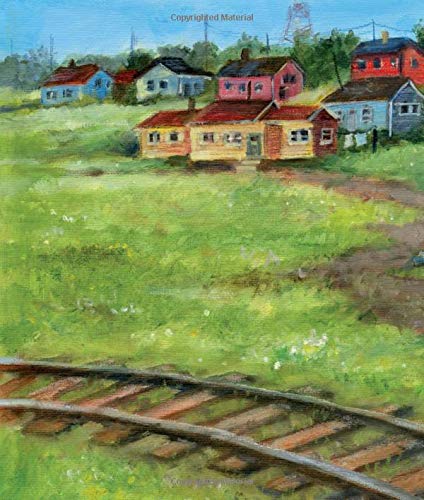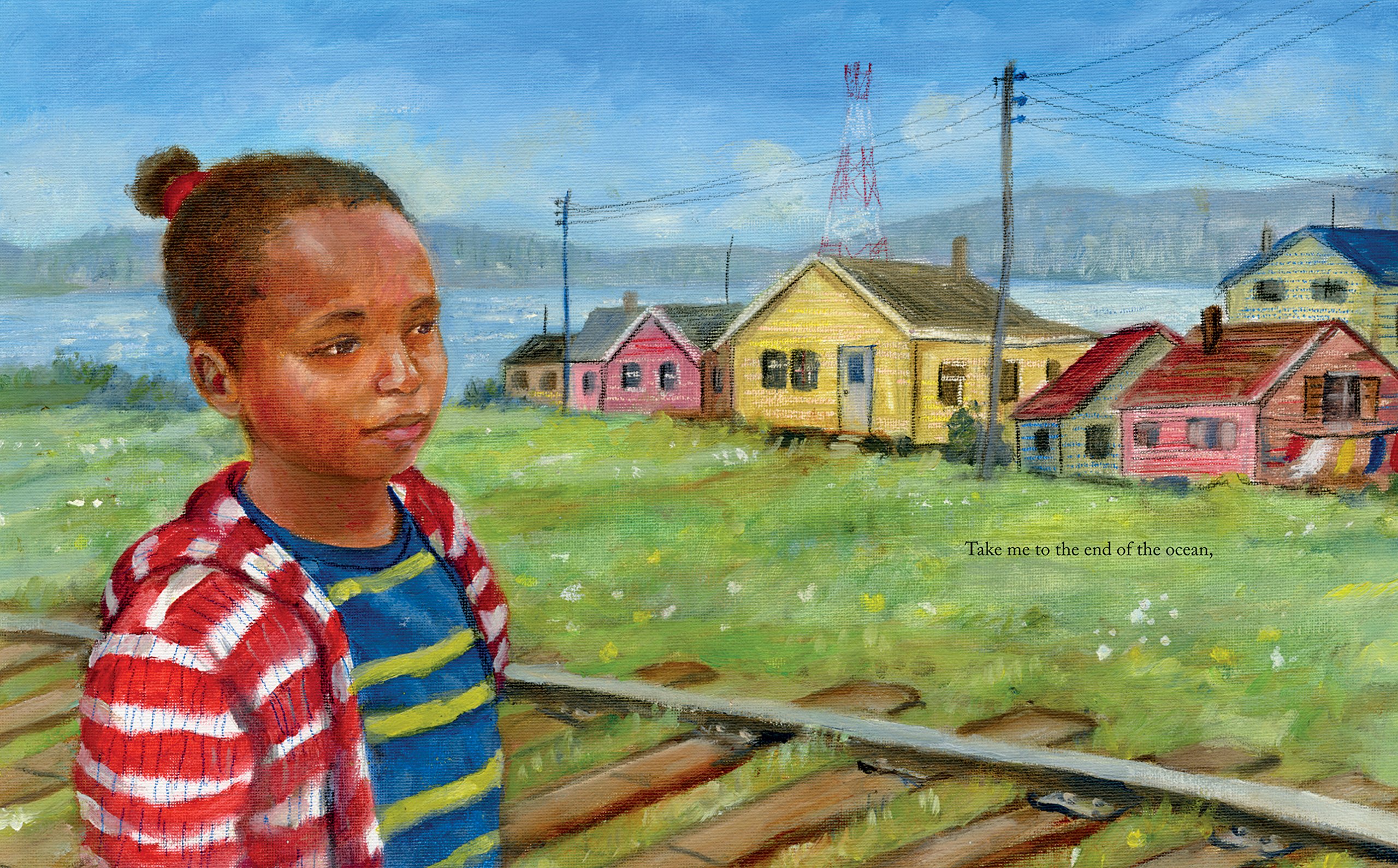Africville
Africville
Take me to the end of the ocean,
Where waves come to rest and hug the harbor stones,
Where the grass runs high up the hillside and the houses lay out like a rainbow,
Where home smells like sweet apple pie and blueberry duff.
Take me up over the hill,
Where the berries are thick and tasty,
Then meet me at the Caterpillar Tree.
Africville tells the tale of a young girl in modern day Halifax, Nova Scotia, who is visiting the site of the former Africville community on the shores of the Bedford Basin. She imagines life there in the last century before the residents were forcibly removed by city officials using dump trucks and the community was destroyed. Many of those residents were descendants of those who had fled the American Revolutionary War or slavery during the War of 1812. Shauntay Grant’s Africville is an homage to a community and a piece of history at risk of being forgotten. The simple lyrical free verse evokes memories of activities enjoyed in Africville in the 1960s, including football, blueberry picking and rafting on Tibby’s Pond, as well as the local landmarks, Caterpillar Tree, Kildare’s Field, and the church. The final spread features the narrator visiting a monument engraved with her great grandmother’s name and enjoying an ice cream at the current annual Africville reunion festival.

Shauntay Grant is descended from Black Loyalists, Jamaican Maroons and Black Refugees. She is a performance artist and accomplished author. The simplicity of her story engages readers of all ages and backgrounds, and it brings to light a dark period in history in a completely accessible and very beautiful way. There is a melody to Grant’s poetry that entrances, and, when paired with Eva Campbell’s vivid illustrations, the former thriving community comes to life.

Campbell’s illustrations are simply stunning. Completed in oil and pastel on canvas with the texture of the canvas threads visible in the reproductions, the pictures beg to be touched. This aspect adds an almost tactile component to the reading experience. Campbell expertly captures the morning sunrise over the basin, the vivid rainbow of coloured homes, and the lush berry blues in such a way that readers can almost feel the heat of the sun and smell the blueberry duff baking. All senses are engaged. The photographs and factual sidebar in the back of the book, which provide background on the history of Africville as well as resources for further information, are invaluable.
One reading is not enough to capture all of the nuances in this book, obviously a true work of love on Grant’s part. Africville is destined to become a picture book classic, a staple in classrooms and libraries, and well-deserving of any future recognition or awards.
Cate Carlyle is an author and former elementary teacher currently residing in Halifax, Nova Scotia, where she is a librarian at Mount Saint Vincent University.
